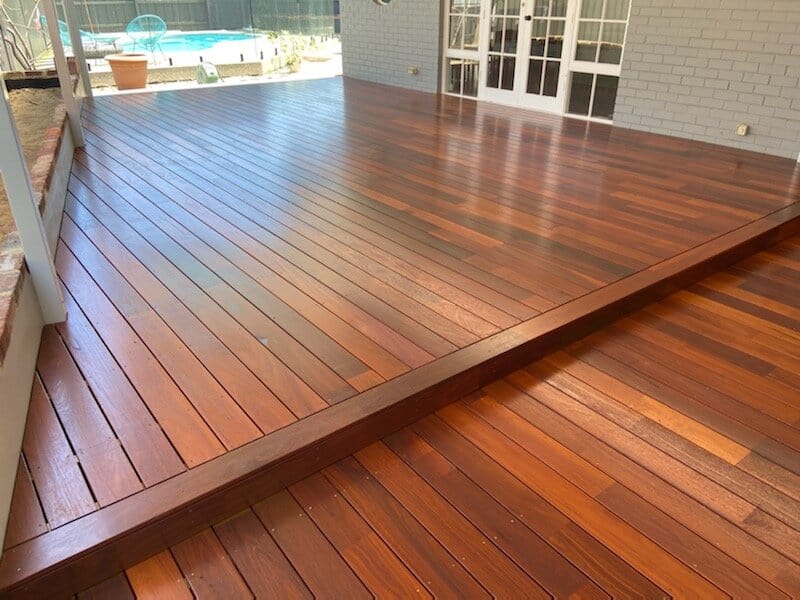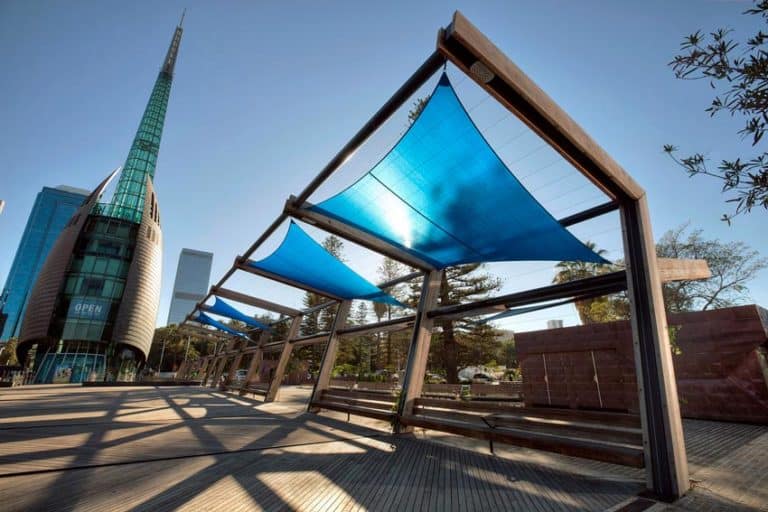A deck in the backyard is an Australian standard. It’s a place for relaxation, where you can have a few drinks with friends as the meat sizzles on the BBQ or watch the kids launch themselves from as they bomb into the pool.
If you are building a deck in the near future, you have probably considered what type of decking you should use. If that’s the case, then you’re in the right place. In this article, we will look at a number of factors that will help you decide which decking material is the best option for you.
Material
There are two types of materials you can use for your deck: timber and composite. Timber is the traditional choice, due to its gorgeous aesthetic and texture, but composite has been gaining popularity since it entered the market in the 1990s because of some key benefits.
Benefits of timber
- Natural product
- Aesthetic appeal
- A variety of species and grades
- Easy to work with
- Cheaper per square metre
Benefits of composite
- Low maintenance
- Durability – resistant to water, harsh weather conditions and rot
- Safety – anti-slip technology, won’t splinter
- Cost effective over many years
- Manufactured in different colours
- Mimics the appearance of timber
- Easy to install
Cost comparison
Determining which material is more cost-effective can be tricky, as they are both cheap in different ways, depending on how you look at it.
Confused? Let me explain.
Timber costs between $45-$100 per square metre (depending on grade and species), while composite timber has a median price of $150 per square metre. So timber is the economically viable choice, right? Not necessarily. Due to the fact that composite generally requires much less ongoing maintenance than timber which often requires annual oiling the whole of life costs can be very comparable.
Environmental choice

In an era of climate change, there is a demand for environmentally-friendly products. So which decking material is best? Even though it is argued that the production of timber is more energy efficient, I believe that composite is the true champion of the environmental challenge.
Composite timber is made from a mixture of wood fibres and plastics. Instead of requiring timber from regrowth forests and plantations, composite products use recycled materials. Trex, which is considered to be the #1 brand of composite timber, uses 95 percent recycled materials, including sawdust, wood pallets and polyethylene. They also claim that 70 percent of all recycled grocery bags in the US end up in their product. Not only is composite timber repurposing a lot of material that would otherwise end up in landfills, it is also decreasing the demand for virgin wood.
Source: Trex
Conclusion
As you can see, there are benefits to building your deck with timber and with composite. What will be most suitable for your circumstances will depend on your deck’s intended uses, your budget and whether you have the time for proper deck maintenance. Whatever you decide, your deck is sure to be a great addition to your backyard.


































